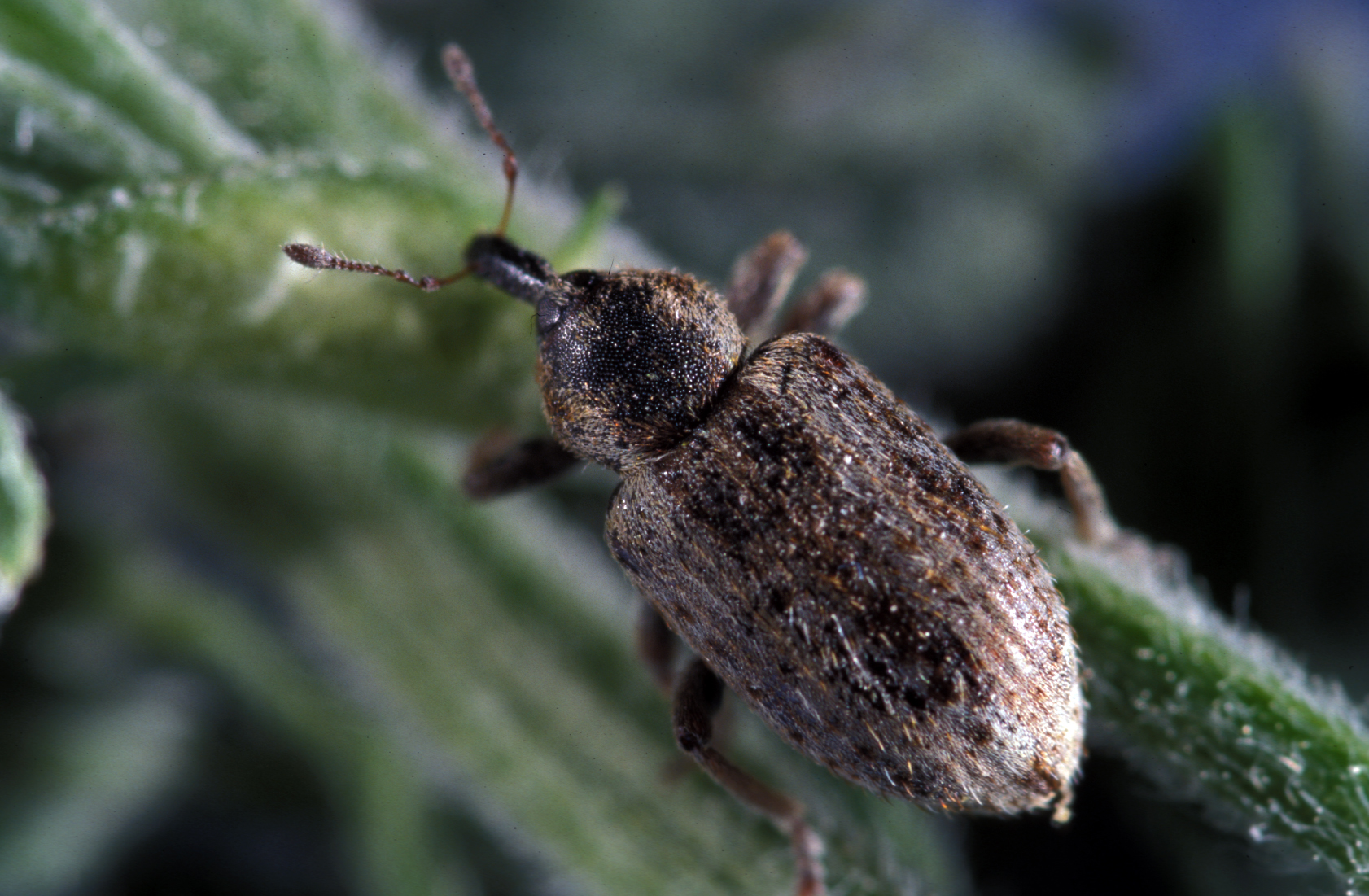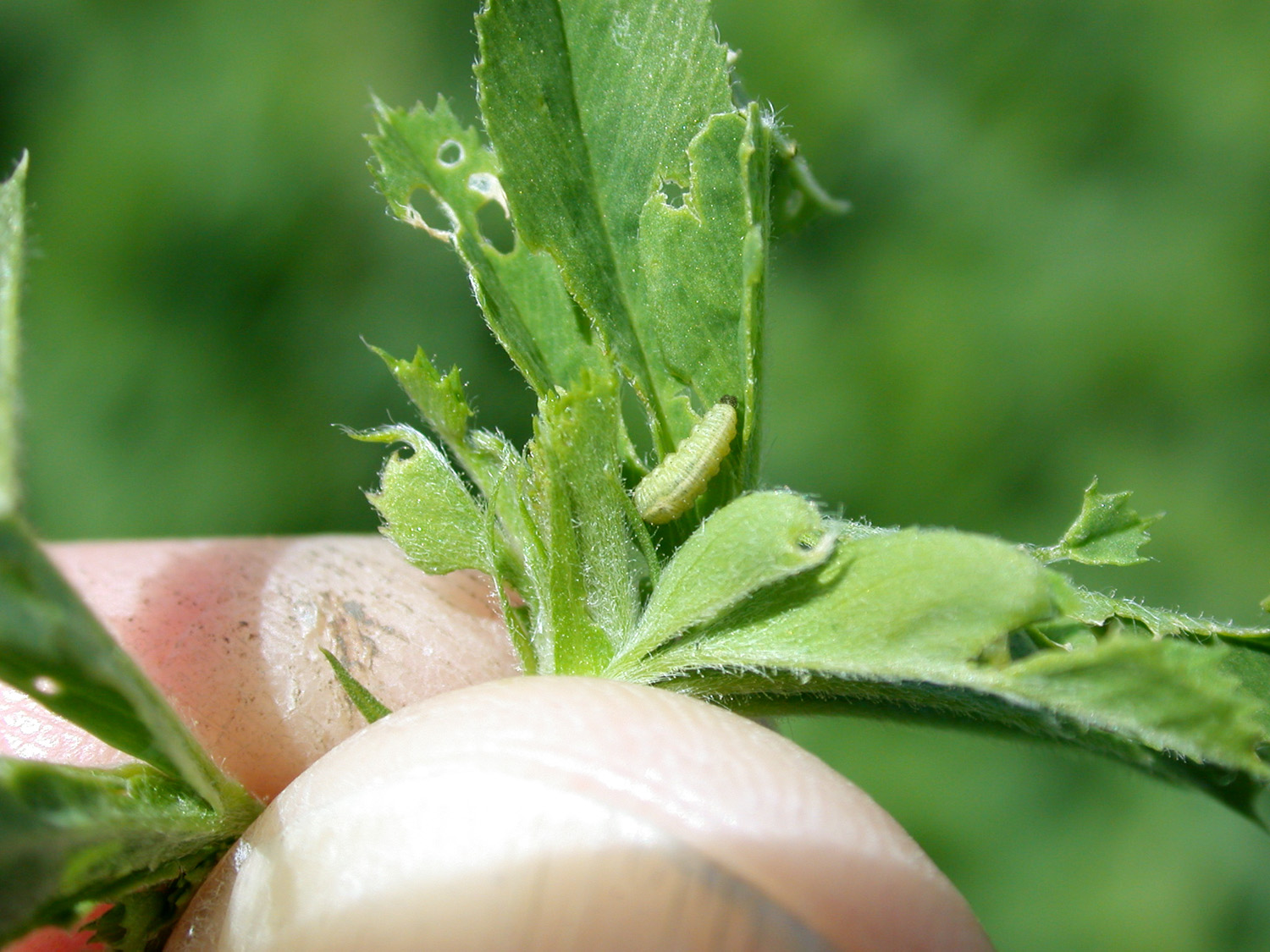Pest managers in southern Indiana should begin scouting their alfalfa for leaf feeding from weevil larva. This pest is often overlooked during the early spring planting season, but is a consistent resident of most alfalfa fields. These insects are highly cold tolerant, so our cold snaps during this past winter are unlikely to have negatively affected weevil populations.
Most alfalfa producers will have some familiarity with this pest and will have “favorite” insecticides for management. These are most often pyrethroids, which are tried and true and still generally effective. However, in recent years there have been increasingly frequent reports of resistance to pyrethroids rendering sprays less effective. These reports have originated primarily in northern and western geographies, but there is no reason it could not happen here. In short, it’s a good time to do a post-treatment survey for live weevil larvae after spray applications. And remember to rotate chemistries (even varying the pyrethroid of choice is better than doing the same thing every year). There are also non-pyrethroid options for control of this pest. See the alfalfa weevil management recommendations, here.
Producers can manage this pest most effectively by utilizing heat unit accumulations data (base 48°F) to determine when sampling should begin and when an action should be taken, The management guidelines listed below should be used to determine when alfalfa weevil should be controlled in southern Indiana. Refer to the following map for alfalfa weevil development in your area.
Alfalfa Weevil Management Guidelines Southern Indiana
| Heat Units | % Tip Feeding | Advisory |
|---|---|---|
| 200 | Begin sampling. South facing sandy soils should be monitored earlier. | |
| 300 | 25 | Re-evaluate in 7-10 days using the appropriate HU or treat immediately with a residual insecticide if 3 or more larvae are noted per stem and % tip feeding is above 50% |
| 400 | 50 | Treat immediately with a residual insecticide. |
| 500 | 75 | Treat immediately. |
| 600 | 75+ | If cutting delayed more than 5 days, treat immediately. |
| 750 | If harvested or harvesting shortly, return to the field in 4-5 days after cutting and spray if 1) there is no regrowth and weevil larvae are present OR 2) feeding damage is apparent on 50% of the stubble and weevil larvae are present. |




